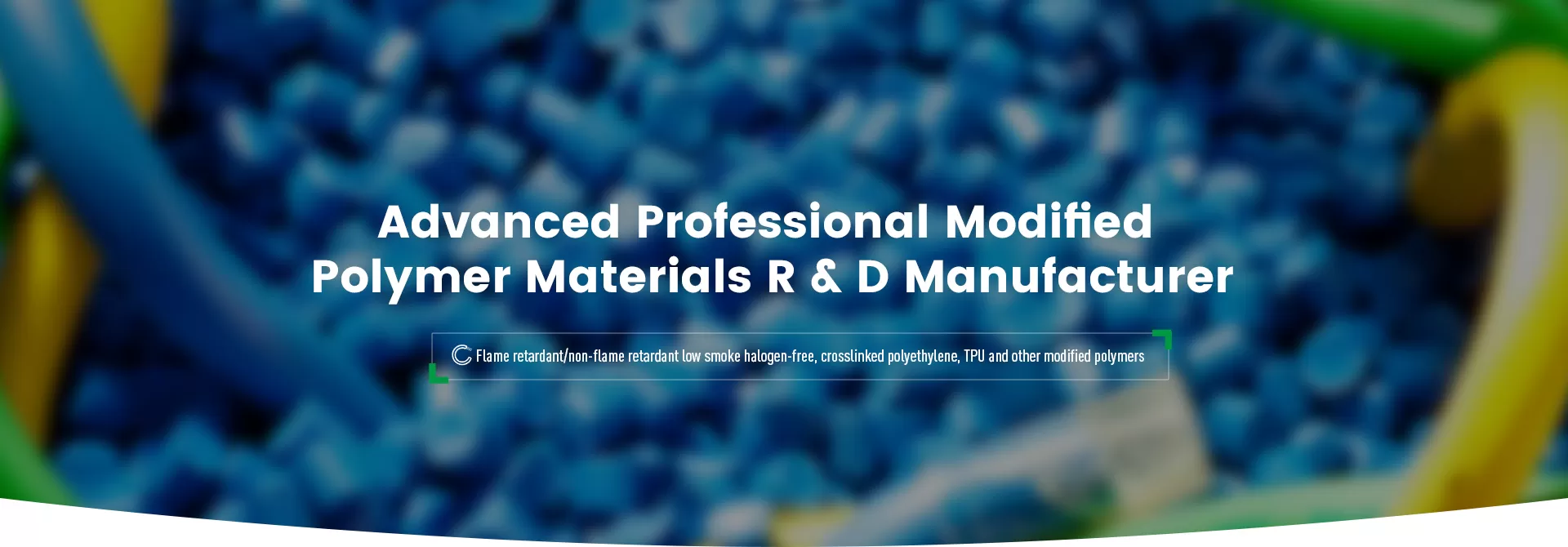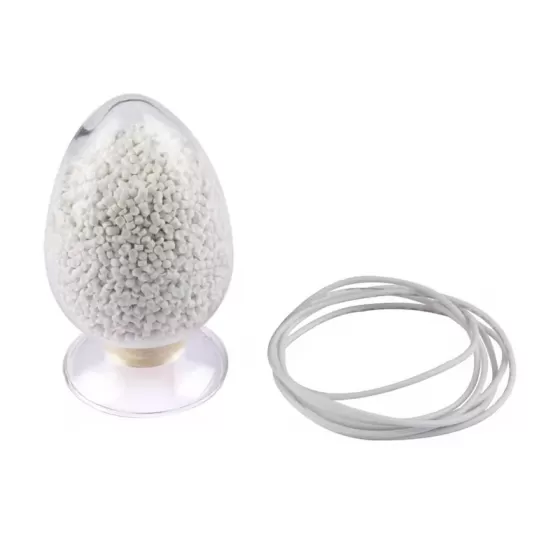

TPE wire and cable sheath material is made of high-purity resin as the base material, and is mixed with halogen-free flame retardants, antioxidants, etc. and extruded into granules. It has excellent performance such as halogen-free, heat-resistant, and weather-resistant, has no precipitation pollution, meets the relevant requirements of Rohs, and is easy to extrude and process. It can be combined with other different types of resins (PP, PE, PS, PA, etc.), flame retardants, functional additives, etc. to repolymerize and process into new elastomer materials.
Halogen-free flame-retardant TPE is a halogen-free and environmentally friendly material with phosphorus and nitrogen as flame retardant elements. The mechanical properties meet the requirements for TPE wires in UL standards, and the flame retardancy reaches UL1581VW-1, UL94V-0, V-1, V-2 and CSAFT-2, FT-1 levels. The product meets the environmental requirements of ROHS2.0, Reach, Halogen-free, PAHS, 23P-Free, PFOS&PFOA, etc.
Application fields:
Combined with different types of resins and other additives, TPE can be used in the manufacture of wires and cables in the fields of consumer electronic cables, medical cables, new energy vehicles, charging pile cables, insulated wire sheaths, wire plugs, etc. This product has good production and processing, delicate appearance, and no white precipitation.
| NO. | Project | VALUE | Typical value | UNIT | Method |
| 1 | Hardness | 80±3 | 80 | A | GB/T 2411 |
| 2 | Specific gravity | 1.02±0.05 | 1.02 | g/cm³ | GB/T 1033 |
| 3 | Heat resistance grade | 105 | 105 | °C | —— |
| 4 | Volume resistivity at 20°C | ≥10¹⁴ | 6.2×10¹⁴ | Ω·mm | GB/T 2951 |
| 5 | Tensile strength before aging | ≥10 | 12.5 | Mpa | GB/T 2951 |
| 6 | Elongation before aging | ≥300 | 580 | % | GB/T 2951 |
| Performance after aging 135℃×168h | |||||
| 7.1 | Tensile strength after aging | ≥10 | 13.75 | Mpa | GB/T2951 |
| 7.2 | Tensile strength change rate | ≤±25 | 10 | % | GB/T2951 |
| 7.3 | Elongation after aging | ≥300 | 480 | % | GB/T2951 |
| 7.4 | Elongation at break change rate | ≤±25 | -17 | % | GB/T2951 |
| 8 | Tear resistance | ≥20 | 35 | N/mm | GB/T 33594 |
| 9 | Low-temperature embrittlement (16H, -40°C) | -40°C | conform | \ | GB/T 5470 |
| 10 | Weather resistance (720H, UV irradiation) | No cracks on the surface | conform | \ | GB/T 33594 |
| 10.1 | Tensile strength change rate | ≤30 | 15.2 | % | GB/T 33594 |
| 10.2 | Elongation at break change rate | ≤30 | 22.3 | % | GB/T 33594 |
| Acid and alkali resistance (oxalic acid, sodium hydroxide, 23°C, 168H) | |||||
| 11.1 | Change rate of tensile strength after acid resistance | ≤±30 | -20 | % | GB/T 2951 |
| 11.2 | Elongation at break after acid resistance | ≥100 | 121 | % | GB/T 2951 |
| 11.3 | Change rate of tensile strength after alkali resistance | ≤±30 | ±19 | % | GB/T 2951 |
| 11.4 | Elongation at break after alkali resistance | ≥100 | 118 | % | GB/T 2951 |
| Hydrolysis resistance (80°C, 168H) | |||||
| 12.1 | Change rate of tensile strength after water resistance | ≤±30 | -23 | % | GB/T 2951 |
| 12.2 | Elongation at break after water resistance | ≤±30 | -22 | % | GB/T 2951 |
| 13 | Surface resistance | ≥10⁹ | 10⁹ | Ω | GB/T33594 |
| 14 | Fire retardant finished product | Single vertical burning | conform | \ | GB/T33594 |
| 15 | ROHS | The latest EU regulations | conform | \ | \ |
| 16 | REACH | The latest EU regulations | conform | \ | \ |
| 17 | HF | IEC61249-2-21:2003 limit value | conform | \ | \ |